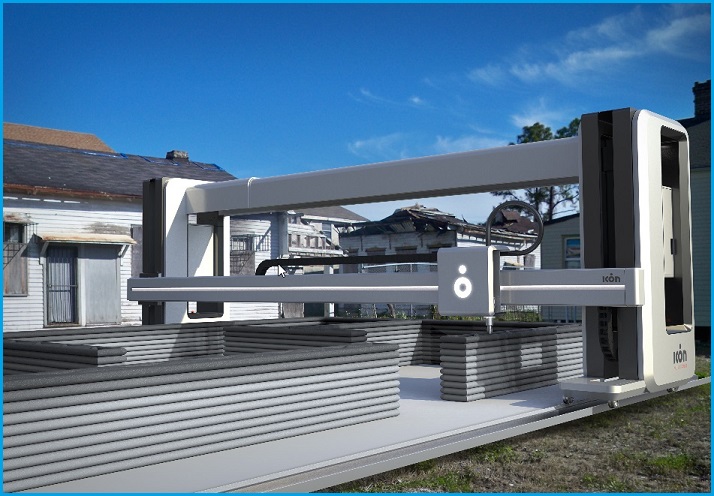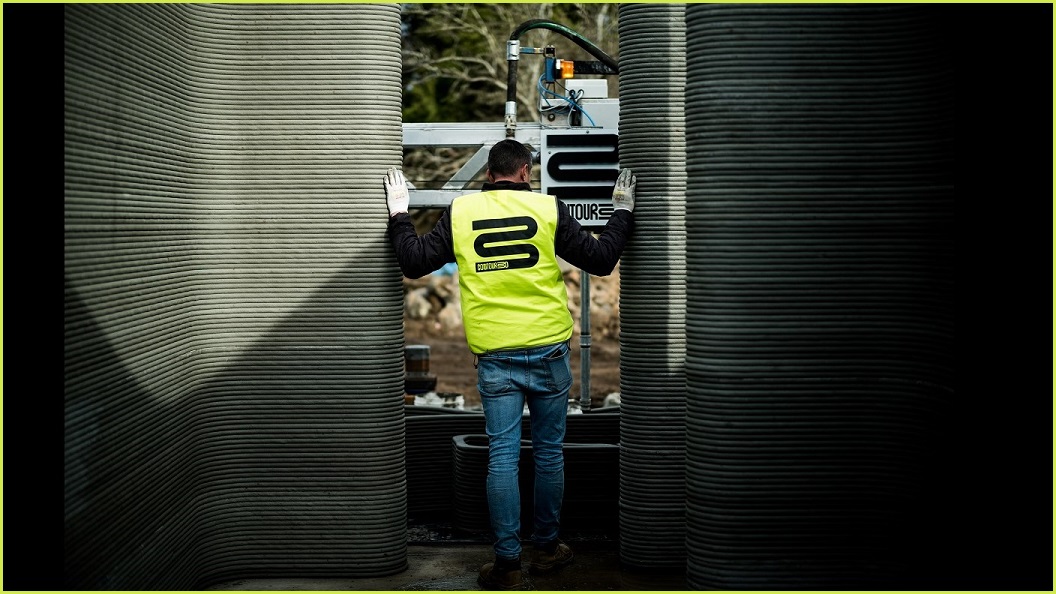A tiny village in South America has everyone talking about 3D print technology and its possibilities.
The entire village on the outskirts of Nacajuca, Mexico consists of tiny homes which have been created using an oversized 3D printer.
The innovative program was initiated by the Mexican government who donated the land to house the homeless and poor.
The beneficiaries of the homes also get to stay in them for life.
The one-storey homes are approximately 45.5m2 and each house has two bedrooms, a kitchen, and a bathroom.
To build the homes, the printer pours layers of lavacrete, a proprietary concrete mix, one after another, in long swirls.
Amazingly, one home can be completed in less than 24 hours.
The 3D homes have already proven to be durable.
Shortly after they were built, Nacajuca was hit with a magnitude 7.4 earthquake; the houses were left standing without a scratch.

Houses being 3D printed in Mexico. Photo: Supplied
3D set to boom
According to USA technology research consulting firm Smithers, 3D printing is set for explosive growth.
After the pandemic-related boom from printing objects like test swabs, protective gear and respirator parts, the 3D printing market is forecast to be worth $55.8 billion by 2027. Global value of 3D printing activities reached $5.8 billion in 2016.
Nick Holden, engineer and founder of Contour 3D, an Australian company that specialises in using printing technology in construction has just finished one project, a pool cabana in Victoria.
He describes his company as a technology company that builds, not a building company that simply uses tech.
He is also behind another company Modular Walls, which has over 80 employees in five warehouses across the country and $30 million in annual revenues.
Contour 3D recently built a pool cabana which was shown on the TV show, The Block.
“It was a fantastic opportunity to print a 60m2 building for them as part of the renovation for Scott Cam, the show’s presenter, for his own property. The building was 3 metres high and took 28 hours of print time in total,” said Holden.
The print was the largest ever for his company and the first ever print outdoors in the southern hemisphere that used 36 tonnes of dry material.
“It was challenging,” Holden said. “The giant 3D printer built a pool cabana on the outskirts of Melbourne in a rare feat that could pave the way for 3D-printed houses in the future.”
Holden is keen to see more 3D technology used in housing and said the building industry is the last to be fully automated using tech such as robotics.
“It is not only just here in Australia – it’s the same with the rest of the world that lacks technology in the construction industry. Our aim is to develop all our own machinery and technology to make Australia an innovative world leader.
“The industry is still building pretty much the way it did 2,000 or 3,000 years ago,” he adds.
“As there was no 'instruction book' for this new technology, we’ve had to develop every system from the actual machinery, materials and software. Now we have a good handle on all of this and we continually innovate to improve.”
Contour3D has been working on a new home with designers and builders from Simonds Homes to develop an ideal layout for the future of sustainable modern Australian living.
The house will be ready for viewing in December 2022.
The 210-square metre house will comprise of four bedrooms and will utilise all the advantages offered by 3D printing to create aesthetically beautiful living spaces that are more energy efficient than traditional building methods.
3D tiny homes on the way
Another project already underway for Contour 3D is a tiny home build.
The 50m2 home in Gymea, NSW, is set to print shortly.
“We are still refining actual costs taken for this build. We will print this in around 15-18 hours of actual printing time,” says Holden.
“One of the benefits of tiny home builds using the printer is that a 3D construction printer only deposits the material it needs and no more, so there is next to no wastage. Currently we have 30 per cent recycled components in our mix.”
Holden adds his team is currently working on increasing the use of recycled materials to 50 per cent.
The aim is to develop a concrete mix that will use up to 70 per cent recycled material and will be self-insulating, so additional insulation will not be needed.
“We have had many enquiries for social and affordable housing as printing can be more cost effective than traditional methods and many multiples faster. It also doesn't require the same skilled trade, which is currently in short supply in Australia.”
Next, Holden’s team wants to introduce the use of artificial intelligence.
AI technology will help in selecting the right use of concrete mix based on weather, for either day or night printing when temperatures change.










